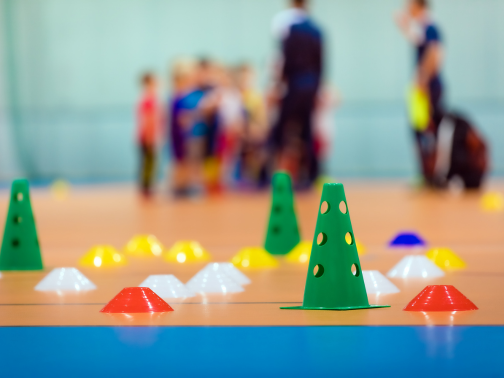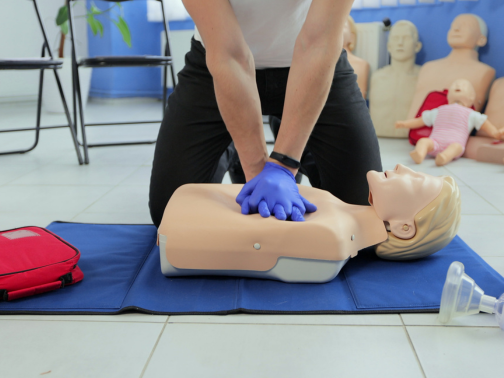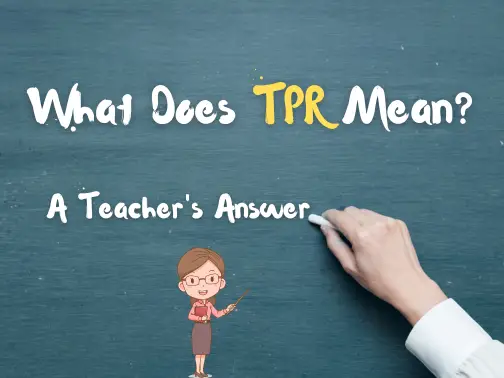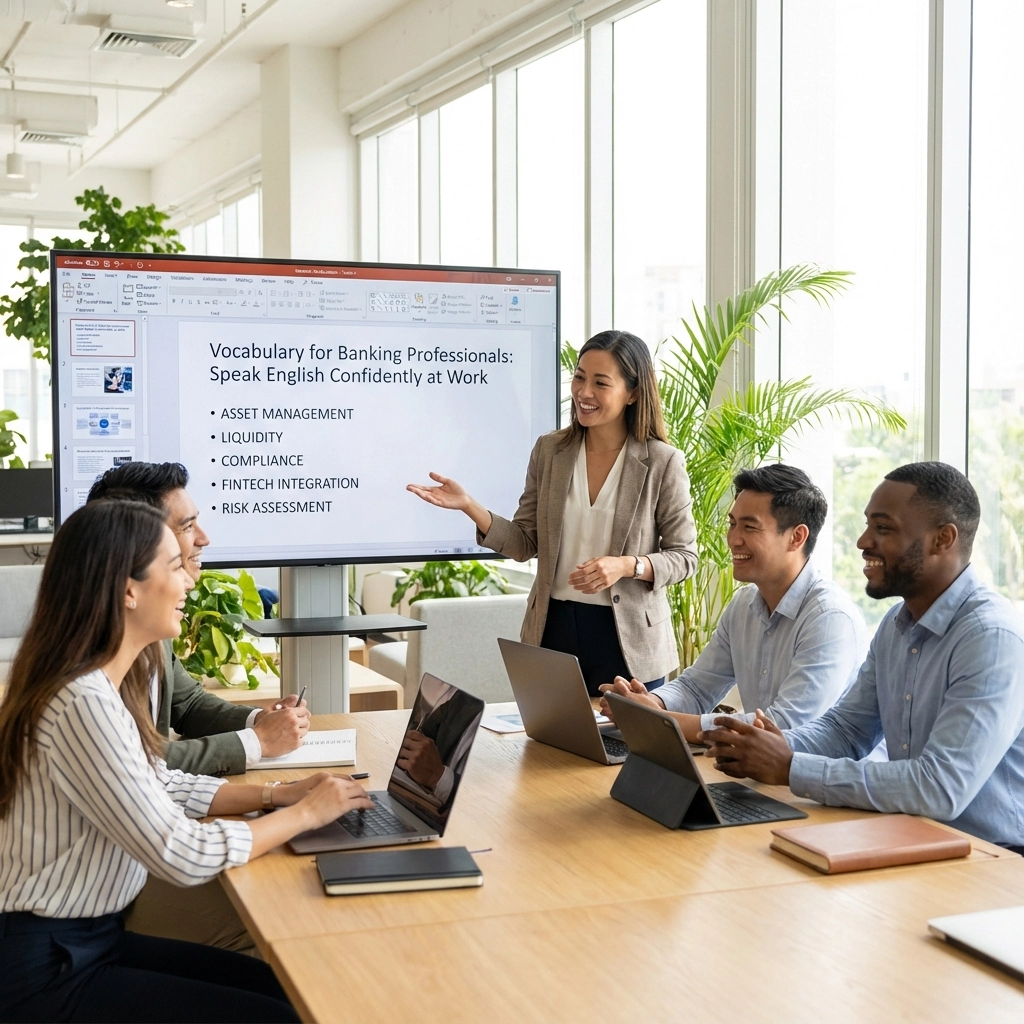Contents
Toggle
Meet David De’ Ath, founder, editor, and writer at Wonderful World English. With his extensive background as an English teacher, David provides valuable insights and practical tips on ESL for students and teachers alike.
TPR is not merely a teaching methodology; it embodies a holistic approach to learning that Dr. James Asher, a psychology professor at San José State University, introduced.
Melding language with action, TPR pivots on the coordination of speech and physical movement—students listen to commands and express their understanding through bodily actions.
Asher’s innovation has proliferated beyond its linguistic roots, influencing a broad spectrum of activities ranging from early childhood and special education to high-pressure environments such as military and law enforcement training.
TPR, or Total Physical Response, is a dynamic teaching method that combines language learning with physical movement. Widely used in education, sports, therapy, and military training, it enhances comprehension, memory retention, and coordination. TPR caters to diverse learning styles, fostering active engagement and cognitive development.
Standing at the intersection of movement and language, Total Physical Response offers a path to accelerated language acquisition and cognitive development.
It crafts a learning environment where learners actively participate, thereby cementing their knowledge through the nexus of word meanings and their associated actions.
TPR’s flexible framework also extends into areas like occupational therapy and sports training, reinforcing its reputation as a versatile technique for reinforcing comprehension and motor skills alike.
Key Takeaways
- Total Physical Response is a teaching approach that integrates language acquisition with physical movement.
- TPR’s versatility makes it beneficial in varied sectors, including education, therapy, and training.
- The methodology supports cognitive and motor skills development through active learner engagement.
How Total Physical Response is Applied
TPR is a groundbreaking approach with far-reaching benefits across numerous fields.
This method, rooted in integrating physical movement with learning, stands out for its adaptability and effectiveness.
A standout feature of TPR is its inclusivity, particularly benefiting kinesthetic learners who thrive when learning is paired with physical activity.
This approach ensures that learners of all styles can engage and absorb information in a way that resonates with them.
Beyond catering to different learning styles, TPR is remarkable for enhancing memory retention.
By associating words with actions, learners create stronger, more lasting connections in their minds, making the learning experience effective and memorable.
Moreover, TPR plays a crucial role in fostering a positive and dynamic learning environment.
Such an atmosphere is vital for both personal and academic growth, making learning an enjoyable and enriching experience.
The versatility of TPR extends beyond the classroom.
From sports coaching and professional training to therapeutic practices and educational settings, the applications of TPR are vast and varied.
Below are some of the most notable domains where TPR is used as a most valuable tool:
1. Use of TPR in Language Learning
Learning languages taps into the method of Total Physical Response, especially in ESL education, to complement verbal teaching with dynamic physical engagement.
ESL educators across the globe integrate actions to solidify the understanding of new words and grammar.
Similar to the way infants absorb their first language, the technique allows students to internalize new languages effortlessly through associative learning—pairing motion with words to increase retention and confidence while speaking.
Check out the link below for more insights into the world of language learning, specifically English as a Second Language (ESL)!
Related: Are ESL Teachers in Demand? (Teacher’s Answer)
2. TPR’s Role in Education
In the crucial stages of early development, Total Physical Response acts as a key learning facilitator.
It helps instill vocabulary and language concepts and enhances motor skill development.
By using simple physical commands, educators can promote an interactive environment that supports language growth and encourages participation, which is essential for cognitive advancements at a young age.

3. TPR Within Special Education
Total Physical Response finds rewarding applications in special education by offering a tailored learning experience for students with varied abilities.
Through combined cognitive and physical engagement, TPR offers an alternative learning path. It empowers students by adjusting to their individual challenges.
It creates a nurturing classroom space that supports their learning and fosters a sense of community.
4. TPR in Training Athletes
In sports, Total Physical Response is a strategic approach to enhancing athletes’ performance.
This method critically supports the development of muscle memory and quick reflex actions, which are vital to athletic success.
By systematically responding to verbal cues with physical actions, athletes can improve their coordination and reaction times—key elements for excelling in competitive sports.

5. TPR in Occupational Therapy
Occupational therapy leverages TPR to assist patients in regaining or enhancing motor skills and cognitive function.
In this therapeutic context, TPR aids in constructing new neural pathways and reinforces patient capabilities through directed bodily movements coupled with verbal cues.
This is especially beneficial for individuals working to recover or improve daily function due to various health challenges.
6. TPR in Military Exercises
Military training employs Total Physical Response to sharpen soldiers’ reflexes and condition their responses to commands.
This rigorous practice is designed to instill discipline and automaticity in movements, essential for the precision and quick action needed in military operations.
TPR assists in creating instinctive reaction patterns to auditory signals, thereby supporting soldiers in high-pressure environments.

7. Benefits of TPR for Law Enforcers
Similar to military applications, TPR is a valuable tool for law enforcement training, where officers must react swiftly and accurately to verbal commands.
Developing such reflexive responses can be critical in maintaining safety and executing law enforcement duties effectively.
Officers can perfect necessary physical maneuvers that align with auditory signals through repetitive TPR activities.
8. Advantages of TPR in Medical Training
Medical professionals rely on Total Physical Response to improve their procedural skills.
Simulating medical scenarios where specific actions follow commands helps in ingraining the steps of various procedures, which can be crucial in time-sensitive or emergency situations.
TPR promotes this kinesthetic learning, which is key in a field where actions can immediately affect patient outcomes.

9. TPR for Developing Motor Skills
The application of Total Physical Response extends to motor skill development across various age groups and professions.
Individuals enhance their physical coordination and kinesthetic intelligence by combining instructions with actions.
Practicing movements in response to verbal cues allows for refined motor skills crucial in both everyday activities and specific vocational tasks.
10. TPR’s Influence on Cognitive Advancement
Cognitively, Total Physical Response contributes to deeper learning through the engagement of multiple brain areas.
It helps strengthen the connection between language and action, thereby facilitating better memory retention and comprehension.
By actively involving the brain in dual tasks, the learning experience becomes more embedded and establishes a solid framework for future knowledge acquisition.

Conclusion
Total Physical Response (TPR) stands out as a method that deeply integrates physical activity into language acquisition, redefining traditional approaches in multiple disciplines.
Its well-documented benefits include heightened comprehension, enriched vocabulary, and enhanced memory.
By using coordinated movements, this technique capitalizes on the natural connection between physical actions and language, making the learning process more intuitive and retention stronger.
TPR’s adaptability across learning styles makes it especially valuable, as it creates an inclusive setting where each participant feels engaged.
Beyond language instruction, TPR extends its influence into athletics and therapeutic practices, reinforcing its versatility.
Positive feedback attests to its efficacy, whether used to improve communication skills, aid athletes in perfecting their craft, or assist patients in therapeutic settings.
The method underlines the significance of active participation in effective learning processes, urging educators and trainers to foster environments where progress is both seen and felt.
Hence, TPR is more than a teaching method; it’s an innovative conduit for experiential learning.
Embracing TPR’s techniques, those involved in teaching and learning can venture into a sphere of dynamic and profound educational experiences.
As the method continues to evolve, its ability to meet various needs and support cognitive development remains clear.
| Benefit | Description |
|---|---|
| Comprehension | Improves understanding by linking language with action. |
| Vocabulary | Enriches language acquisition through physical association. |
| Memory Retention | Strengthens recall by reinforcing verbal commands with movements. |
We hope you found value in this information, you can reach out to us if you require any support or assistance.
Have a wonderful day!
Image Attribution: All images licensed via canva.com





